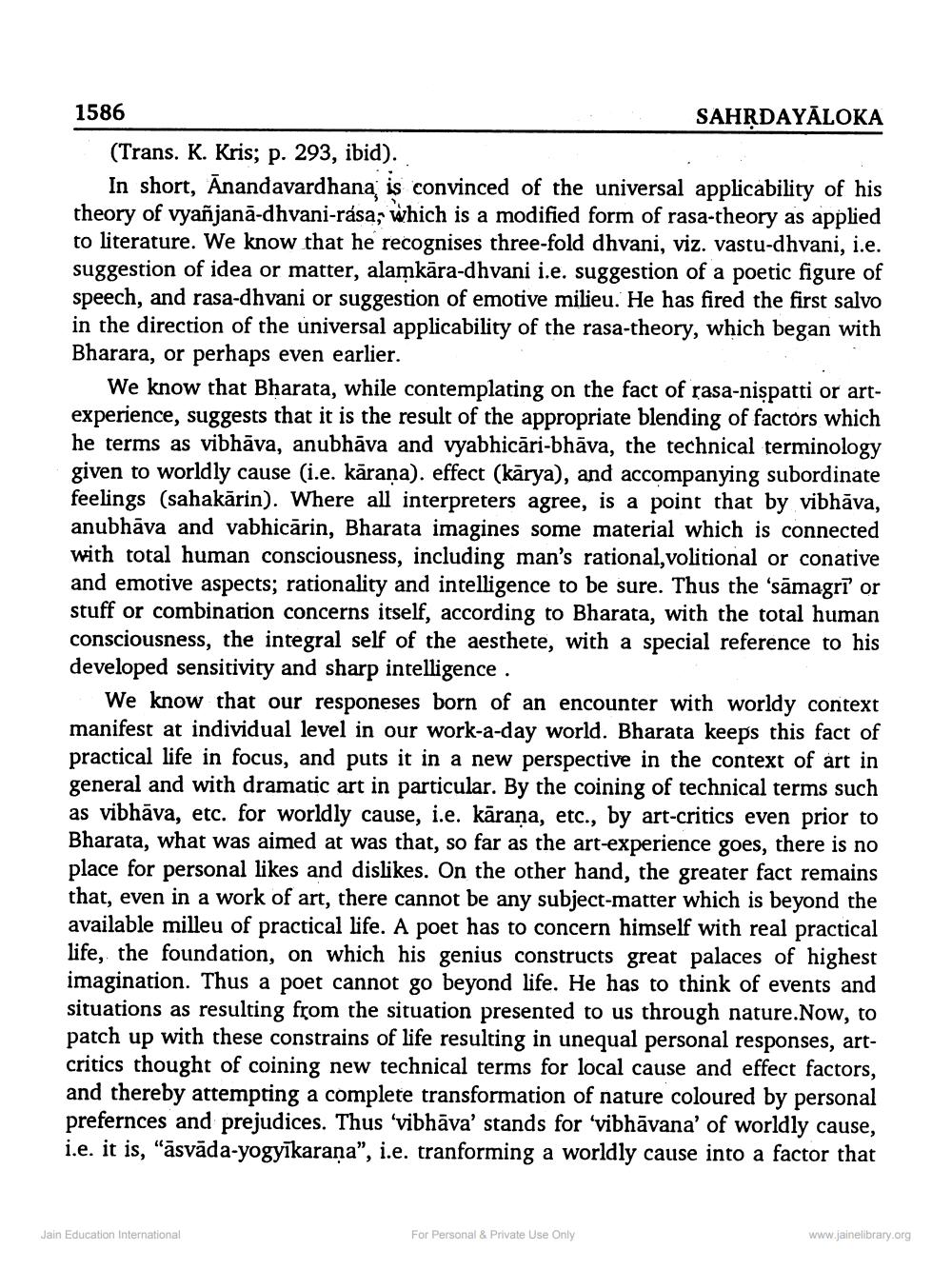________________
1586
(Trans. K. Kris; p. 293, ibid).
In short, Anandavardhana, is convinced of the universal applicability of his theory of vyañjana-dhvani-rása, which is a modified form of rasa-theory as applied to literature. We know that he recognises three-fold dhvani, viz. vastu-dhvani, i.e. suggestion of idea or matter, alamkara-dhvani i.e. suggestion of a poetic figure of speech, and rasa-dhvani or suggestion of emotive milieu. He has fired the first salvo in the direction of the universal applicability of the rasa-theory, which began with Bharara, or perhaps even earlier.
SAHṚDAYALOKA
We know that Bharata, while contemplating on the fact of rasa-nispatti or artexperience, suggests that it is the result of the appropriate blending of factors which he terms as vibhāva, anubhāva and vyabhicari-bhāva, the technical terminology given to worldly cause (i.e. kāraṇa). effect (karya), and accompanying subordinate feelings (sahakarin). Where all interpreters agree, is a point that by vibhāva, anubhava and vabhicārin, Bharata imagines some material which is connected with total human consciousness, including man's rational, volitional or conative and emotive aspects; rationality and intelligence to be sure. Thus the 'samagri' or stuff or combination concerns itself, according to Bharata, with the total human consciousness, the integral self of the aesthete, with a special reference to his developed sensitivity and sharp intelligence.
We know that our responeses born of an encounter with worldy context manifest at individual level in our work-a-day world. Bharata keeps this fact of practical life in focus, and puts it in a new perspective in the context of art in general and with dramatic art in particular. By the coining of technical terms such as vibhāva, etc. for worldly cause, i.e. kāraṇa, etc., by art-critics even prior to Bharata, what was aimed at was that, so far as the art-experience goes, there is no place for personal likes and dislikes. On the other hand, the greater fact remains that, even in a work of art, there cannot be any subject-matter which is beyond the available milleu of practical life. A poet has to concern himself with real practical life, the foundation, on which his genius constructs great palaces of highest imagination. Thus a poet cannot go beyond life. He has to think of events and situations as resulting from the situation presented to us through nature.Now, to patch up with these constrains of life resulting in unequal personal responses, artcritics thought of coining new technical terms for local cause and effect factors, and thereby attempting a complete transformation of nature coloured by personal prefernces and prejudices. Thus 'vibhāva' stands for 'vibhāvana' of worldly cause, i.e. it is, "asvada-yogyīkaraṇa", i.e. tranforming a worldly cause into a factor that
Jain Education International
For Personal & Private Use Only
www.jainelibrary.org




